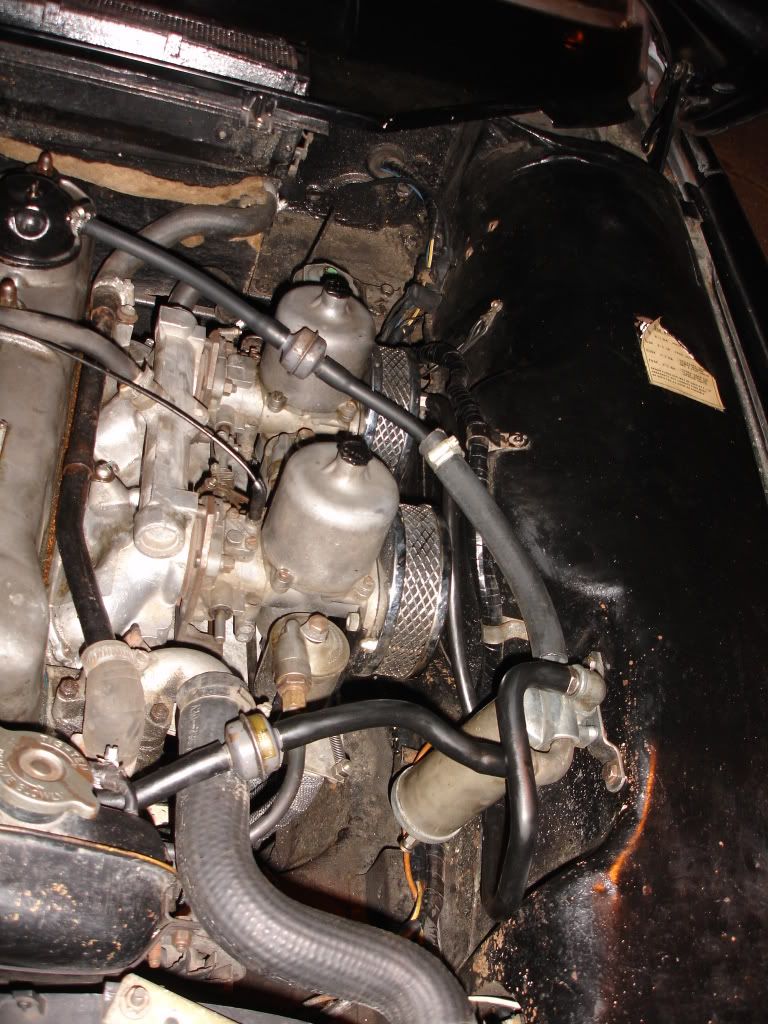simmosimkins
Member
After years of faithful service from the cooling system on my 22tc, all has gone wrong recently, the heater packing up as well as losing water everywhere! After replacing foam in the heater and a few hoses the repaired system was then good enough to make the rad let go! After further repair I now have a dry presurised system, however I cannot have the coolant level above 3 inches below the bottom of the rad filler neck or when the car is warmed up any fluid above this level is ejected. I am thinking it cant be right that some of the uppermost coolant tubes are not covered with coolant, yet a quick look on here tells me that it is! Although this seems to be comman I am not very comfortable with it and would like to secure a solution.
Firstly the rad cap spec on my car is 7lbs per square inch. I have read that a 10lb cap may cure the problem, however I have also read that fitting a cap of higher pressure than the system strains the system and is therfore not advisable. Any comments on this matter much appreciated, is anyone else running a 10lb cap on a 7lb system, are there any benifits, more importantly are there any consequences?!!
Secondly an additional coolant reservoir tank would seem to be an option. This is where I could use some help. I have heard there are two ways of doing this and would like to know which is best.
1 Replace the origional rad cap with a blanking cap also known as a zero pressure rated cap. Connect the radiator overflow outlet to a hose clipped pressure pipe feeding to the bottom of a secondry tank the same pressure rating as the origional radiator cap.
2 Leave the origional rad cap as is . Connect the radiator overflow outlet as before to a secondry tank with zero rated pressure.
I favour no 2 (a) because you dont have to purchase another rad cap and (b) you dont need to secure a specific pressure rated tank as its very easy to convert any pressure rated tank into a zero pressure one ! and therfore there should be more choice of tank.
Is this the right choice and if so does anyone know where to get some sort of kit from (tank/ tank top/ tubing hose clips fixing bracket etc )or is it just a cobble one together from ebay sort of thing.
As always any advice most welcome.
Firstly the rad cap spec on my car is 7lbs per square inch. I have read that a 10lb cap may cure the problem, however I have also read that fitting a cap of higher pressure than the system strains the system and is therfore not advisable. Any comments on this matter much appreciated, is anyone else running a 10lb cap on a 7lb system, are there any benifits, more importantly are there any consequences?!!
Secondly an additional coolant reservoir tank would seem to be an option. This is where I could use some help. I have heard there are two ways of doing this and would like to know which is best.
1 Replace the origional rad cap with a blanking cap also known as a zero pressure rated cap. Connect the radiator overflow outlet to a hose clipped pressure pipe feeding to the bottom of a secondry tank the same pressure rating as the origional radiator cap.
2 Leave the origional rad cap as is . Connect the radiator overflow outlet as before to a secondry tank with zero rated pressure.
I favour no 2 (a) because you dont have to purchase another rad cap and (b) you dont need to secure a specific pressure rated tank as its very easy to convert any pressure rated tank into a zero pressure one ! and therfore there should be more choice of tank.
Is this the right choice and if so does anyone know where to get some sort of kit from (tank/ tank top/ tubing hose clips fixing bracket etc )or is it just a cobble one together from ebay sort of thing.
As always any advice most welcome.




